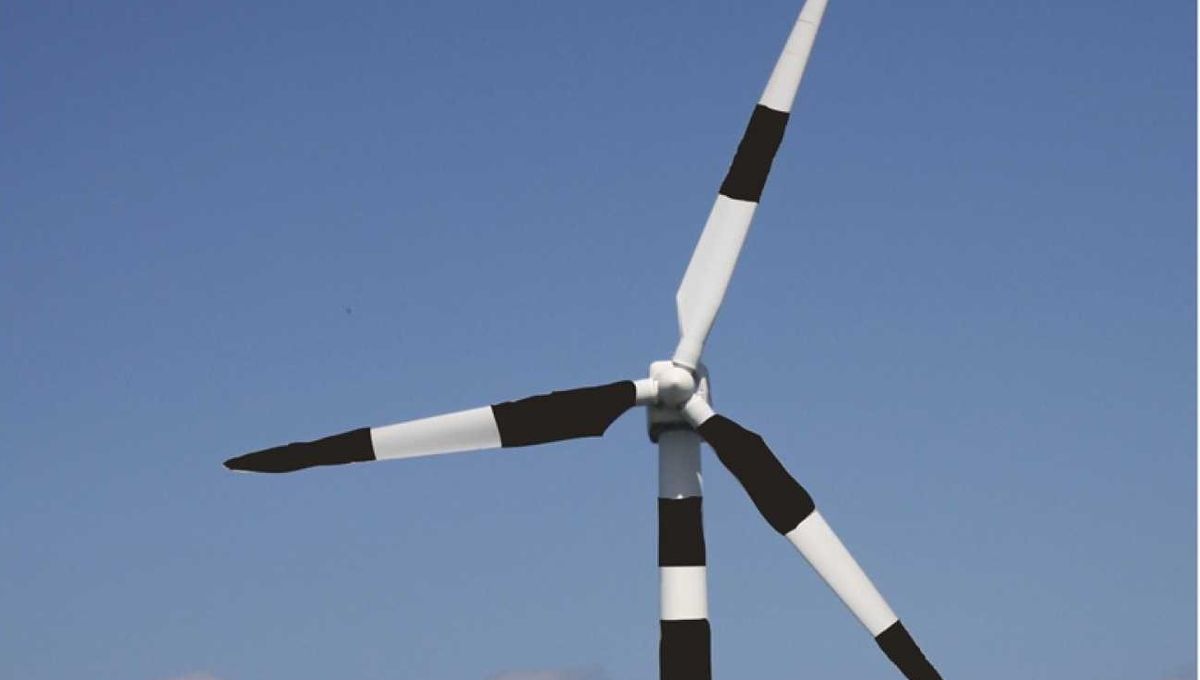
Painting a simple stripy pattern on wind turbines could prevent the majority of bird deaths from collisions with the blades, according to new research. The work, which builds on previous studies showing a that small lick of paint could save endangered bird species, proposed that increasing the contrast of wind turbines against the sky will allow birds to recognize and avoid them, dodging one of the major drawbacks associated with turbines’ use.
As wind turbines have become one of the staple technologies humans have as a means of reaching the ultimate goal of net zero emissions, their production has skyrocketed and adoption of both land and offshore wind farms has never been higher. One of the main oppositions to such adoption is the fact that wind turbines often result in higher bird deaths as birds collide with the spinning blades, reducing populations of important species such as eagles and seabirds. While this argument fails to account for the dramatically higher number of bird deaths as a result of air pollution and a changing climate, there is valid concern around turbines’ impacts on birds, and methods of reducing such deaths are now being heavily explored.
In 2020, a large study in Norway demonstrated that painting just one blade black on each turbine was enough to reduce bird deaths by 70 percent, particularly in rare bird species. It suggested that the white color scheme, which is painted on turbines to make people happier when placed in view of their precious countryside, was having the same effect on birds – it makes turbines harder to see for us, but harder to see for flying birds too. If we are to reduce turbine-bird collisions, the blades may need to become easier to see.
Based on previous studies into how birds see the world, Graham Martin, from the University of Birmingham, and Alex Banks, from Natural England, designed a new paint scheme for wind turbines that they believe will maximize their chance of being spotted by birds. The design was to be high contrast, enabling it to be spotted even in low light, and would create a “flickering” effect when spinning, which birds are great at identifying.
The design would be easy to implement, with just a small amount of paint needed to be added by manufacturers as they create the turbine blades. It would, however, be a tougher sell on residents, who already complain about the visual pollution of large turbines.
It’s important to note that while the design would be ideal in theory, it hasn’t actually been tested yet. The authors hope it can be considered by manufacturers and governments looking to implement large wind farms in the near future.
The study is published in the journal Global Ecology and Conservation.
Source Link: Make Wind Turbines Stripy To Stop Bird Deaths, Suggest Scientists